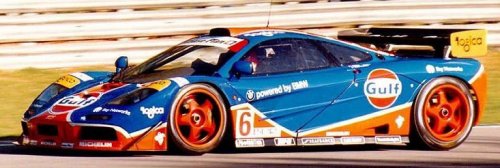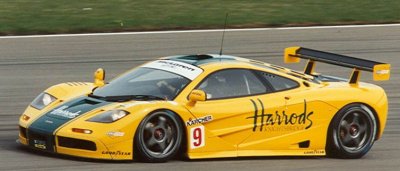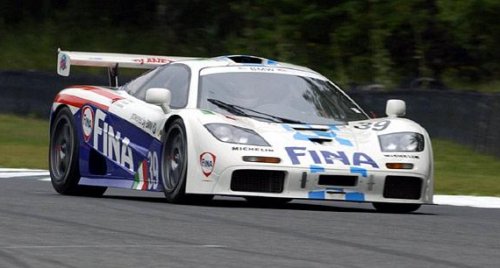The 1995 BPR Global Endurance Series
Amongst the private teams that ran the GTR in its debut season were Bellm and Bscher's Gulf-sponsored GTC team, Dave Price Racing and Mach One. The GTR took an emphatic ten victories during the season, literally sweeping aside the challenge from the Porsche 911, Ferrari F40 and F355. Following on from wins at Jerez, Paul Ricard, Monza, Jarama, Nurburgring and Donnington, McLaren prepared the car to cope with a 24 hour race and a seven-car assault on the 1995 Le Mans in June was launched. F1 GTRs came 1st, 3rd, 4th, 5th and 13th - the finest Le Mans debut by any marque and only the third time in history that a debutant car had won outright.
Returning to the BPR series, there were further wins at Suzuka, Silverstone, Nogaro and Zhuhai later in the year. The McLaren F1-GTR had taken the sports car racing world by storm.
Back at the Genesis factory, McLaren Cars celebrated the Le Mans wins by preparing five specially modified road-going F1s (designated the F1-LM - see picture, previous page)
|


